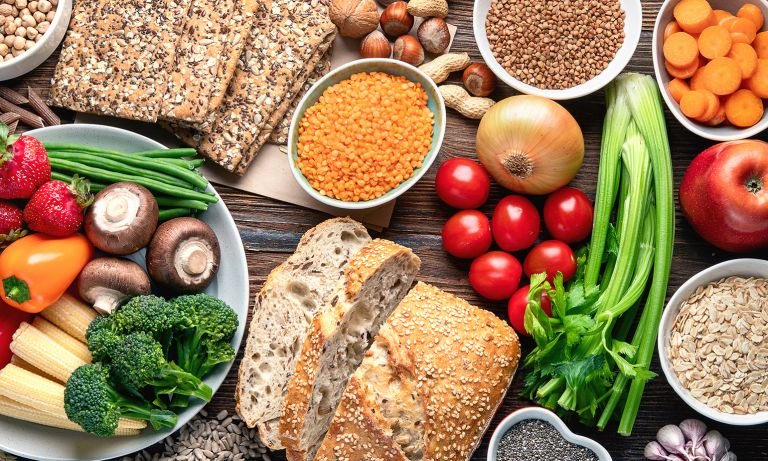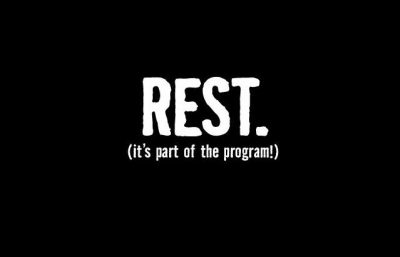The Skinny On Fats
Fats are an important part of your diet but some types are healthier than others. Dietary fat is made up of fatty acids. There are two types of fatty acids: saturated and unsaturated. Fats are called saturated or unsaturated depending on how much of each type of fatty acid they contain. Dietary fat provides energy and helps with nutrient absorption, brain, and nerve function. Some unsaturated fatty acids are essential nutrients. This means that we need to get them from food because our bodies can’t make them. Fats and oils also add flavor and texture to foods and make you feel full longer.
Saturated Fats
Saturated Fats are fats that have single bonds between their molecules and are “saturated” with hydrogen molecules. They tend to be solids at room temperature, such as butter.
Food sources rich in saturated fat include meat and dairy products, such as:
● Cheese
● Butter
● Ice cream
● High-fat cuts of meat
● And non-animal fats:
○ Coconut oil
○ Palm oil
Research has found that medium-chain triglycerides (or MCTs) are the most healthful types of saturated fat. Coconut oil, for example, is rich in MCTs. Though there is some debate on this due to the fact that it is also considered saturated fat.
It is my belief that a diet that includes some coconut oil is probably beneficial due to the fact that it is digested quickly and is known for energy and metabolism-boosting effects. Remember though, it is still saturated fat which should be used moderately and within the healthy daily guidelines for ingesting fats in your diet. Until more research is done, most of the claims that say coconut oil is a miracle oil, seem to be unproven for now.[1]
Once thought that saturated fat was responsible for coronary heart disease (or CHD), recent research has challenged the connection altogether. Uncovering a fifty-year myth that stems from research beginning in the 1950s by an American scientist Ancel Keys. It was this theory that was embraced by the American Heart Association and the US federal government in the 1960s and 70s. However, at the same time as Keys research, a British physiologist John Yudkin argued that sugar intake was more closely related to the incidence of and mortality from CHD.[[2]][[3]} More studies will probably follow in this area.
Interesting Fat Fact: Cells contain 50% fatty acids and are essential within a cell membrane. For calcium to be effectively incorporated into the skeletal system, at least 50% needs to be from saturated fats!
Unsaturated Fat
Unsaturated fats contain one or more double or triple bonds between the molecules. As oils, these fats are liquids at room temperature. They are also found in solid foods.
This group is further classified into two categories called monounsaturated fats and polyunsaturated fats. It is known that unsaturated fats help lower a person’s levels of LDL cholesterol, reduce inflammation, and build stronger cell membranes in the body.
Dietary sources of unsaturated fats include:
● avocados and avocado oil
● olives and olive oil
● nut butter
● vegetable oils, such as sunflower, corn, or canola
● fatty fish, such as salmon and mackerel
● nuts and seeds, such as almonds, cashews, and sesame seeds
A healthy cooking tip: when using oils such as hemp seed oil, nut seed oils like sesame, flaxseed, walnut, pistachio, or pumpkin, do not heat them as it destroys their healthy properties. Instead, use them to top off or finish a dish with, otherwise, they are great for salad dressings. In fact, keep them in the refrigerator away from light as well. Avocado oil should also be stored in a dark cool place but is okay to heat.
Trans Fats
These fats are liquid fats that are converted to solid fats during food processing techniques. Some meats and dairy products contain small amounts of trans fats, but they are usually found in processed foods. Examples of food products that may contain trans fats include cookies, crackers, doughnuts, and fried foods. These products generally contain trans fats and should be avoided.
Here’s a list of foods that will generally contain hydrogenated oils which are considered a trans fat.
Vegetable Shortening
Shortening is any type of fat that is solid at room temperature. It’s often used in cooking and baking. Vegetable shortening was invented in the early 1900s as a cheap alternative to butter and is typically made from partially hydrogenated vegetable oil.
Some Varieties of Microwavable Popcorn
Air-popped popcorn is a popular and healthy snack food. It’s full of fiber but low in fat and calories. However, some varieties of microwavable popcorn harbor trans fats. Food companies have historically used partially hydrogenated oil in their microwavable popcorn due to its high melting point, which keeps the oil solid until the popcorn bag is microwaved.
Fried Fast Foods
Fried fast foods, such as fried chicken, battered and fried fish, hamburgers, french fries, and fried noodles, can all hold high levels of trans fat.
The trans fats in these foods can come from a few sources. Restaurants and takeaway chains often fry foods in vegetable oil, which can contain trans fats that soak into the food.
Furthermore, high cooking temperatures used during frying can cause the trans fat content of the oil to increase slightly. The trans fat content increases each time the same oil is reused for frying.
It can be hard to avoid trans fats from fried food, so you are better off limiting your intake of fried food altogether.
Bakery Products
Bakery goods, such as muffins, cakes, pastries, and doughnuts, are often made with vegetable shortening or margarine. Vegetable shortening helps produce a flakier, softer pastry. It’s also cheaper and has a longer shelf life than butter or lard.
Non-Dairy Coffee Creamers
Non-dairy coffee creamers, also known as coffee whiteners, are used as a substitute for milk and cream in the coffee, tea, and other hot beverages. The main ingredients in most non-dairy coffee creamers are sugar and oil.
To avoid trans fat from these products, select non-dairy varieties without partially hydrogenated oil or use alternatives, such as whole milk, cream, or half-and-half, if you’re not restricting dairy altogether.
Certain kinds of Margarine and Vegetable Oils
Some vegetable oils may contain trans fats, especially if the oils are hydrogenated. As hydrogenation solidifies oil, these partially hydrogenated oils were long used to make margarine. Therefore, most margarine on the market is high in trans fats.
Fortunately, trans-fat-free margarine is increasingly available as these oils are phased out. However, keep in mind that some non-hydrogenated vegetable oils may also contain trans fat. Two studies that analyzed vegetable oils — including canola, soybean, and corn — found that 0.4–4.2% of the total fat content was trans fats [[4]] [[5]]
Potato and corn chips
While most potato and corn chips are now free of trans fats, it’s important to read the ingredient lists as some brands still contain trans fats in the form of partially hydrogenated oil.
Pizza
Trans fats can be found in some brands of pizza dough due to partially hydrogenated oil. Keep a lookout for this ingredient, especially in frozen pizzas.
Canned frosting
Canned frosting is mostly made up of sugar, water, and oil. Since some brands still contain partially hydrogenated oil, it’s important to read ingredients lists.
Crackers
Though the amount of trans fats in crackers dropped by 80% between 2007 and 2011, some brands still contain trans fat — so it pays to read the label.
Facts About Grass-Fed Cow Butter
● Butter has 12-15% short and medium-chain fatty acids. This type of fat does not need to be emulsified by bile salts and is absorbed directly from the small intestine to the liver where it is converted into quick energy.
● Butter also has microbial, anti-tumor, and immune system supporting properties. Especially 12-carbon auric acid (medium-chain), which is not found in any other animal fats.
● Butter from pastured cows contains CLC (conjugated linoleic acid). CLC has strong anti-cancer properties. It encourages the build-up of muscle and prevents weight gain. CLC disappears when cows are fed even a small amount of grain.
● Lecithin, a natural component of butter – assists in the assimilation and metabolism of cholesterol and other fat constituents.
● Grass-fed butter may be worth the extra money! It is exceptionally high in fat-soluble vitamins, particularly Vitamin A.
Should You Pick One Essential Fatty Acid (EFA) Over The Other?
Not really. All foods that are rich in fat contain a combination of fatty acids. As such, no food contains entirely saturated or unsaturated fats, making it very difficult to eliminate just one type.
Most health organizations and dietary experts recommend eating saturated fats in moderation, and replacing them with unsaturated fats when possible.
The American Heart Association strongly recommends a saturated fat intake of no more than 5 to 6 percent of total daily calories. This means that for an average 2000-calorie daily diet, no more than 120 calories or 13 grams should come from saturated fats. [6]
Despite the abundance of research on dietary fats, there is still no evidence that conclusively links saturated fats with negative health outcomes such as heart disease.
However, experts agree that limiting the intake of saturated fats and consuming enough unsaturated fats, such as plant oils, avocado, and fish, is the ideal approach to a healthy diet in the long-term.
The Fat Profile
SFA=saturated fats; MUFA= monounsaturated fats; PUFA=polyunsaturated fats
| Coconut 92% SFA 6% MUFA 2% PUFA | Butter 63% SFA 23% MUFA 4% PUFA | Palm 50 % SFA 39% MUFA 11% PUFA | Ghee 66% SFA 30% MUFA 4% PUFA | Natural Animal Fats: ● Lard● Duck fat (homemade) 50% SFA 50% MUFA |
Use these fats liberally for drizzling or just eating!
| Olives 71% MUFA 14% SFA 12% PUFA | Avocado70% MUFA 13% PUFA 12% SFA | Macadamia Nut 81% MUFA 14% SFA 5% PUFA | Also Acceptable: ● Sesame● Walnut● Nut & Seed Butters |
Mother Nature packaged healthy fats in whole food sources such as raw full-fat dairy, eggs, animal meats, and wild-caught seafood.
Not all fats are bad for you, in fact, we absolutely need fats in our diet!
Fabulous Fats
include raw nuts
(not roasted e.g. walnuts, macadamia nuts, almonds).
____________
Oils:
pumpkin seed oil, avocado oil, flax oil, avocado oil
(don’t heat these oil or they will lose their health benefits, keep out of sunlight also).
_____________
Other Oils (heatable):
extra virgin coconut oil, extra virgin olive oil, homemade lard and beef tallow (preferably organic and from sources without additives or chemicals) and butter
(preferably grass-fed butter).
[1] https://academic.oup.com/fqs/article/3/2/61/5475954
[2] https://www.ncbi.nlm.nih.gov/pmc/articles/PMC5793267/
[3] https://www.sciencedaily.com/releases/2016/01/160113103318.htm
[4] https://onlinelibrary.wiley.com/doi/abs/10.1111/j.1745-4522.1994.tb00244.x
[5] https://aocs.onlinelibrary.wiley.com/doi/abs/10.1007/s11746-013-2234-z





